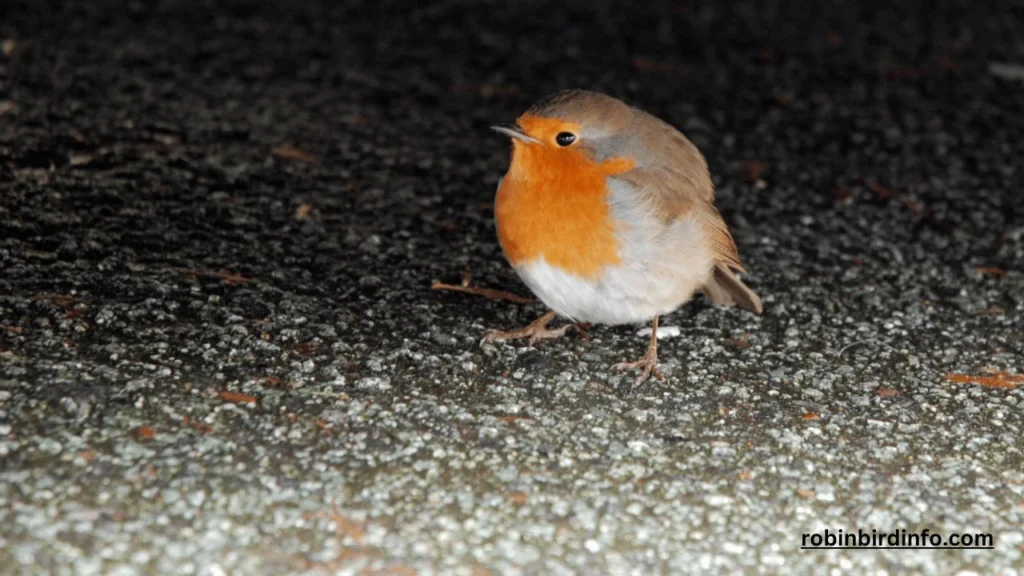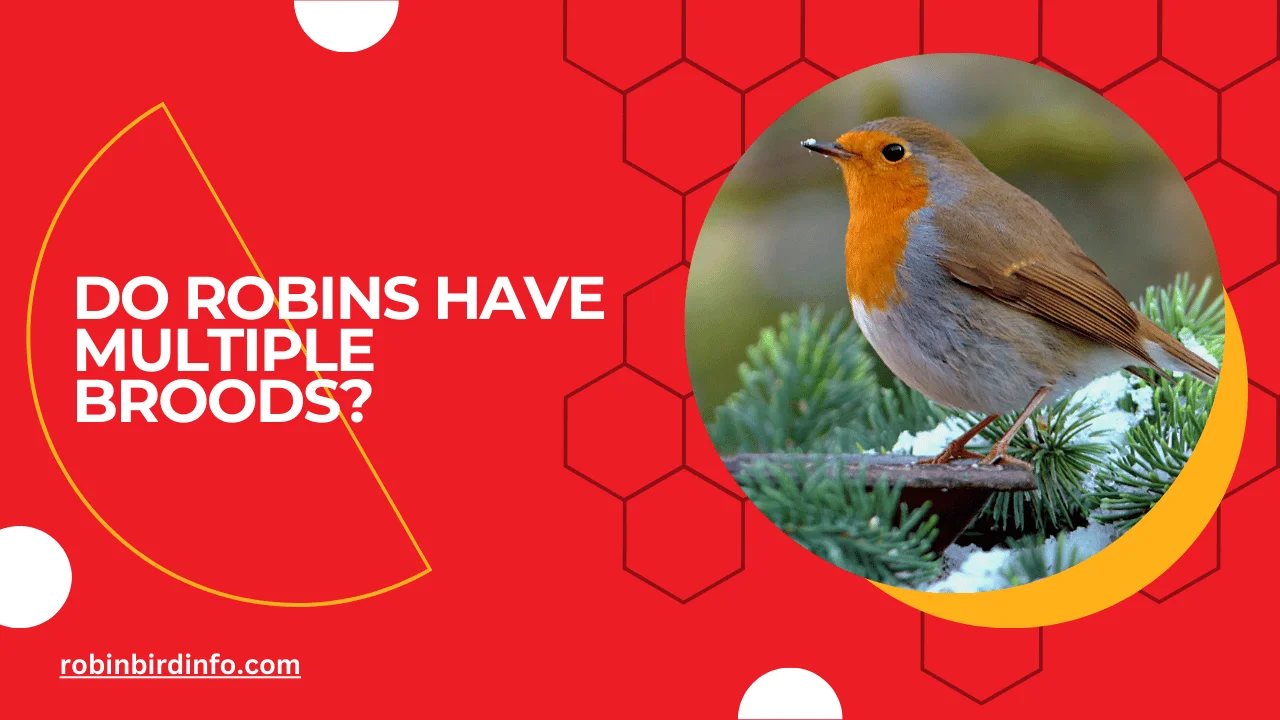Every spring, robins become a sign of renewal, their melodious songs heralding the season of new beginnings.
But behind their cheerful demeanor lies a cycle of intense effort and dedication: raising their young. Did you know that robins may lay eggs and nurture their chicks multiple times in a single season? Understanding how many broods robins have provides insight into their survival strategies and their role in the ecosystem.
Robins are not just a backyard bird; they are a marvel of adaptation and parental care. Their nesting behavior varies depending on environmental factors such as climate, food availability, and predators.
This article uncovers the fascinating details of a robin’s reproductive cycle, focusing on how many broods they can have in one breeding season and the factors influencing this number.
As we dive into the world of robins, you’ll learn not only about their incredible capacity for raising young but also about the challenges they face and how they adapt.
By the end, you’ll gain a newfound respect for these birds and their extraordinary dedication to ensuring the survival of their species.
Contents
- 1 Robin Reproduction Cycle:
- 2 Factors Influencing Multiple Broods:
- 3 The Advantages of Multiple Broods:
- 4 Robin Behavior During Multiple Broods:
- 5 Impact of Environmental Changes on Multiple Broods:
- 6 FAQ’s
- 6.0.1 How many eggs do robins lay in a brood?
- 6.0.2 How long does it take for robin eggs to hatch?
- 6.0.3 Can robins have more than three broods in a season?
- 6.0.4 What factors influence the number of broods a robin has?
- 6.0.5 Do male robins help with broods?
- 6.0.6 How long do robin chicks stay in the nest?
Robin Reproduction Cycle:
The Robin’s breeding season typically begins in early spring, marking the start of a new generation.
During this time, female Robins build nests, often in trees or shrubs, using twigs, grass, and mud. A typical Robin brood consists of three to four eggs, which the female incubates for about 12-14 days.
Once the chicks hatch, both parents are responsible for feeding them. However, the real question arises when we consider the possibility of a second or even third brood.
The flexibility of the Robin’s reproductive cycle allows them to produce multiple broods in a year, depending on the availability of food, weather conditions, and other environmental factors. Understanding this reproductive strategy is key to understanding the Robin’s survival tactics.
Factors Influencing Multiple Broods:
While Robins are capable of raising several broods in one season, several factors influence this behavior. The availability of food plays a critical role.
Robins are opportunistic feeders, consuming insects like earthworms, beetles, and grasshoppers, as well as fruits and berries. When food is abundant, the parents can afford to invest in another round of offspring. Additionally, weather conditions and the length of the breeding season impact the likelihood of multiple broods.
In regions with longer summers and moderate weather, Robins may have the opportunity to raise more than one brood. However, harsh winters or food shortages can shorten the breeding season and make it difficult for Robins to rear multiple broods.
The Advantages of Multiple Broods:
Having multiple broods offers several evolutionary advantages for Robins. One significant benefit is the increased chances of offspring survival. By having multiple sets of chicks, Robins ensure that at least some of their offspring will survive to maturity.
This is especially important when food resources are variable, and not every egg may hatch or survive to adulthood. Additionally, the timing of the broods plays a role in the survival of the species. Robins can time their second brood to coincide with the peak abundance of food, giving their young a better chance of thriving.
Multiple broods also mean that more young Robins are introduced to the ecosystem, helping to maintain the population and sustain the species.
Robin Behavior During Multiple Broods:
Raising multiple broods in one season requires intense energy and effort from the parent Robins. After successfully raising their first brood, the parents often rebuild their nests and start the process again.
This involves searching for food, defending their territory, and ensuring their young are well-fed. Interestingly, Robins that have multiple broods often exhibit increased aggression toward other birds, especially in territorial disputes.
The pressure of raising multiple broods can make these birds more defensive, as they work to protect their young and maintain their nesting site. This behavior highlights the complexity of Robin parenting, where both parents must work together to ensure the survival of their offspring.
Impact of Environmental Changes on Multiple Broods:
As climate change continues to affect ecosystems, Robins may face new challenges in raising multiple broods. For example, unpredictable weather patterns or early cold spells could disrupt their breeding cycles, making it harder for them to have more than one brood.
On the other hand, warmer winters and longer summers in some regions might actually benefit Robins, allowing for an extended breeding period and the possibility of additional broods.
Similarly, changes in habitat due to urban development or deforestation can impact the availability of nesting sites and food sources, which may limit the number of broods a Robin can raise in a season.
As these environmental factors shift, Robins may have to adapt their breeding strategies, further illustrating their resilience in the face of change.

Robins are fascinating creatures, not just because of their distinctive red breast or cheerful song, but also due to their incredible reproductive capabilities.
Their ability to raise multiple broods in one season is a testament to their adaptability and survival skills. This behavior not only ensures the continuity of the species but also allows Robins to thrive in a variety of environments.
By understanding the factors that contribute to this reproductive strategy—such as food availability, weather conditions, and territorial behavior—we can gain a deeper appreciation for these beloved birds and their role in the ecosystem.
Whether you see them hopping around your backyard or nesting in nearby trees, Robins remind us of the delicate balance between nature’s challenges and the resilience of life.
FAQ’s
How many eggs do robins lay in a brood?
Robins typically lay 3–5 eggs per brood.
How long does it take for robin eggs to hatch?
Eggs hatch after an incubation period of 12–14 days, during which the female robin stays on the nest.
Can robins have more than three broods in a season?
Yes, under ideal conditions, robins can have up to four broods per season.
What factors influence the number of broods a robin has?
Factors include climate, food availability, predator presence, and parental health
Do male robins help with broods?
Male robins typically do not build the nest or incubate eggs but help protect the territory and feed chicks.
How long do robin chicks stay in the nest?
Chicks stay in the nest for about 14–16 days after hatching before they fledge.








